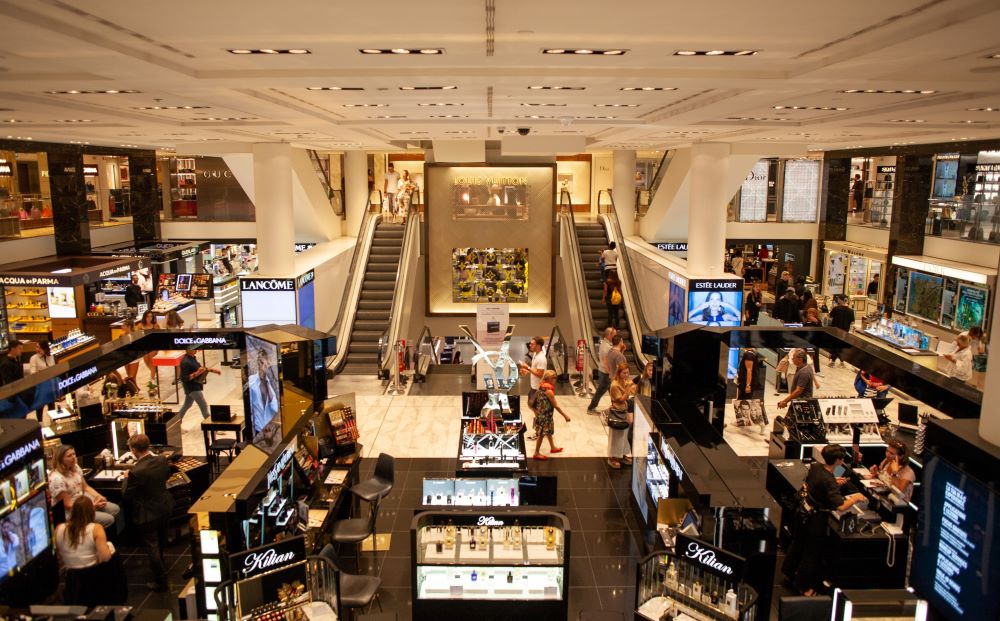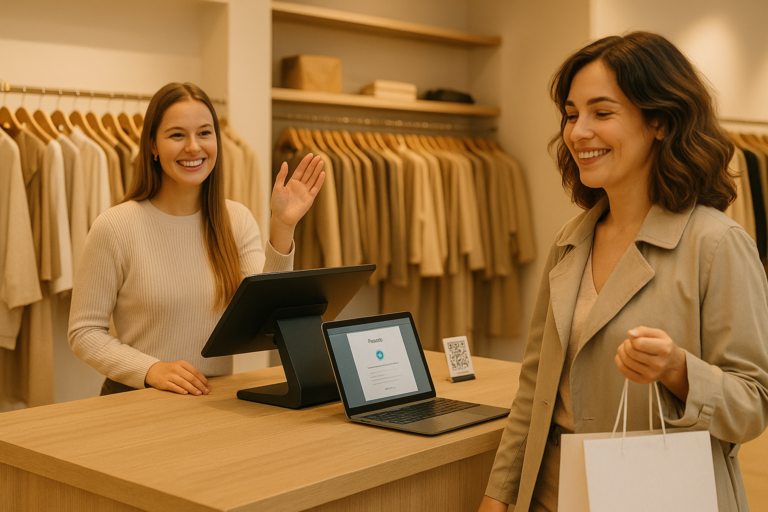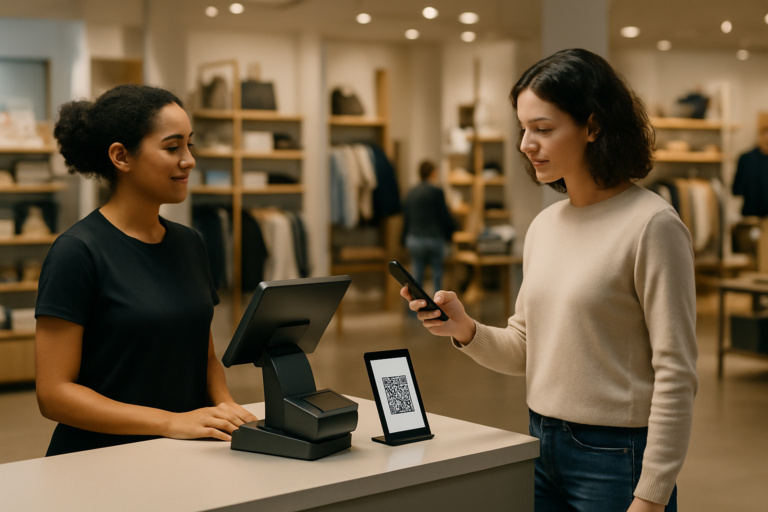The average shopper is now more informed and discerning than ever in retail history. With the increase of digital platforms and easier access to information, customer loyalty in the retail industry is changing. As consumers are better equipped to make purchasing decisions, brands find themselves amid intense competition, with the continuous emergence of new and novel brands along with groundbreaking innovations fighting for the spotlight and the consumer’s wallet.
Winning and keeping the loyalty of the modern consumer is no longer just about offering a quality product or service. It’s about creating an experience, building a relationship, and proving time and again that the brand understands and values the individual needs of its customers. The lines between habits and loyalty have blurred, and in this complex landscape, merely being a familiar name isn’t enough.
Customer loyalty now surpasses transactional exchanges. It’s a complicated relationship of trust, value, and mutual respect. Retailers and brands must rise to the challenge and genuinely understand the nuances driving customer loyalty. This means looking beyond short-term sales and recognising their consumer base’s deeper motivations, desires, and values.
Differentiating between habit and loyalty
In the retail world, though closely intertwined, habits and loyalty are distinct concepts. A habit refers to a routine behaviour performed by a consumer, often driven by the convenience or familiarity of a particular shopping environment. It’s akin to a default setting, an autopilot mode where purchases are made out of repetitiveness rather than deep-rooted attachment.

On the other hand, loyalty is a stronger emotional connection. It’s when consumers consistently choose a brand over its competitors, not just because it’s familiar, but because they deeply connect with its values, trust its quality, and believe in its promise. Loyalty isn’t just about buying; it’s about advocacy, commitment, and a sense of belonging.
The danger with habits is their fragility. An attractive new store opening next door or an innovative online platform offering better deals can easily divert the habitual customer. They might shift allegiances not because they have strong feelings against their usual brand but because something new has caught their eye. Loyalty, conversely, acts as a protective barrier. Loyal customers will think twice before jumping ship, often giving their favourite brands the benefit of the doubt and staying true even in the face of enticing alternatives.
The effect of the COVID-19 pandemic on customer loyalty in retail industry
While the pandemic did usher in a temporary era of digital reliance, recent trends suggest a heartening resurgence of bricks-and-mortar loyalty. Consumers now view shopping not merely as a transactional act but as a valued social outing, an opportunity to reconnect, and a tangible escape from digital overload. This does however make loyalty hard as part of this “enjoyment” is typically browsing multiple locations.
Equally, generationally things are changing even further. Gen-Z, born between 1997 and 2012, has redefined brand loyalty. As digital natives, they rely heavily on online platforms, with 80% using online sources before purchasing. They consult an average of 19 sources, just shy of Millennials’ 23. Unlike previous generations, 68% of Gen-Z ties their purchases to their values, compared to 43% of boomers. For brands, capturing Gen-Z loyalty means aligning with their digital habits and ethical expectations.
The question is for many retailers, with this shift of what defines “loyalty” how can retailers ensure that they are servicing their current customer’s loyalty for the future?
1. The enrollment process: digitising loyalty through wallet passes
The initial step of bringing customers into a loyalty programme is crucial, and in today’s digital age, convenience is king. The shift from plastic loyalty cards to mobile wallet passes is more than a trend; it’s a testament to the power of digital adaptability. But why the mass migration to digital passes? For one, they’re green – both in terms of the environment and for businesses looking to save on physical production costs. Also many consumers are now reliant on their smartphones for everything from travel to their banking, which means a loyalty programme is now just a screen tap away. A unique advantage is the ability of digital touchpoint integrations to provide real-time updates. Imagine, a customer steps into a store, and they instantly receive a notification about their loyalty points and ongoing exclusive offers. This perpetual connection drives deeper brand engagement, ensuring consumers always feel tied to and rewarded by their chosen brands.
2. Omnichannel loyalty: harmonising the customer journey
Where customers now interact with brands through multiple touchpoints, consistency is the key to cultivating loyalty. Omnichannel loyalty ensures that whether a customer interacts with a brand in-store, online, or through a mobile app, their experience is consistent, and loyalty rewards accrue uniformly. This approach acknowledges and rewards every interaction, ensuring customers feel recognised and valued, no matter how they engage.

Looking ahead, omnichannel’s benefits for retailers and customers are manifold. It paves the way for hyper-personalisation, enabling retailers to deliver perfectly tailored vouchers and marketing strategies to each individual customer. Moreover, the seamless integration of devices means customers can shift effortlessly from mobile browsing to desktop purchasing, further reinforcing loyalty. When issues arise, AI-driven solutions offer real-time resolutions, bolstering customer trust. And as these interactions grow in number and variety, a unified loyalty metric becomes invaluable. It offers brands an all-encompassing view of their loyalty program’s performance, highlighting the increasingly central role of omnichannel in the future of engagement and customer loyalty in retail industry.
3. NFTs: pioneering the next frontier of customer loyalty in retail industry
The rise of NFTs (Non-Fungible Tokens) has opened up innovative avenues for loyalty programmes. These unique digital assets can serve as exclusive loyalty rewards, offering customers something truly one-of-a-kind. Whether it’s a limited edition digital art piece or exclusive access to brand events, NFTs can elevate loyalty programmes into a realm previously unimagined, making them more appealing to the tech-savvy, next-generation consumer. It’s also the type of loyalty programme that shows a customer that retailers are engaged with change and are willing to develop and grow.
4. TikTok and brand loyalty: leveraging humour to forge connections
The viral tussle in the UK between M&S and Aldi over caterpillar cakes underlines the power of humour in today’s brand loyalty landscape. Platforms like TikTok provide brands with a space to showcase their lighter side, engage in playful banter, and create shareable moments that resonate with audiences. In a world saturated with advertising, a genuine laugh can cut through the noise, making customers feel more connected and loyal to brands that don’t take themselves too seriously. Many companies are not only winning over new customers this way, but also building stronger brand loyalty as a result. The way that platforms like TikTok allow playfulness and creativity means that marketing, and in-store experiences, have been able to evolve into something far more interactive and immersive.

For instance, a humorous TikTok video can be paired with a QR code or a swipe-up link leading viewers to an online store, a voucher, or an exclusive in-store event. When customers then visit the store, they carry with them the memory of that digital interaction, bridging the gap between the online and offline worlds. The brand’s physical touchpoints – be it the store layout, promotions, or even staff interactions – can mirror the same playful energy, creating a cohesive and memorable brand experience.
These positive digital interactions are integrated with in-store experiences; they can foster a feedback loop. A satisfied customer might share their in-store experience on TikTok or other social platforms, further amplifying the brand’s reach and reputation
5. Experiential retail: transforming physical stores into destination experiences
Today’s consumer doesn’t just shop; they seek memorable experiences. Progressive retailers understand this, moving beyond standard bricks-and-mortar layouts to incorporate cafés, events, and interactive zones. These spaces aren’t just places to buy; they’re vibrant community hubs, beckoning for repeat visits.
An example of this would be a bookshop with regular author sessions or a boutique spotlighting local designers through fashion shows. Such approaches are more than sales tactics. They create deeper connections with customers. Whilst digital platforms reign supreme, these tangible experiences become ever more precious, converting casual visitors into dedicated followers. Retailers etch lasting memories by weaving shopping, entertainment, and community, cementing their position in consumers’ lives. This isn’t merely rebranding traditional retail—it’s revolutionising it. With tools like digital vouchers and email updates, this evolution effortlessly bridges the physical and the digital, delivering a holistic brand experience and stronger customer loyalty in retail industry.
Elevate your retail loyalty strategy with refive
Amidst evolving consumer behaviours and the intertwining worlds of online and brick-and-mortar experiences, retailers are presented with a challenge: how to harness the power of digital touchpoints to foster unparalleled brand loyalty. refive is your solution. We empower marketers with innovative tools that allow for collecting invaluable in-store customer data via digital receipts and other smart touchpoints. Our platform ensures that you can offer the hyper-personalised engagement consumers have come to expect from their online experiences right within your physical store. With refive, you can drive retention and amplify purchase frequencies and basket sizes.
Are you ready to bridge the digital and physical realms, offering your customers a seamless and personalised shopping journey? Discover how refive can transform your customer engagement strategy today.









